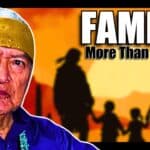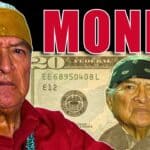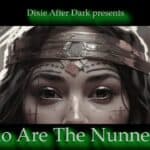
How To Receive Messages From Your Spirit Guides Fast
Ella emphasizes the concept of spirit guides as an extension of oneself rather than external, authoritative beings.

The Secrets of Ancient Knowledge Buried for Centuries
The idea of a universe interconnected by an underlying energy field is reflected in both quantum mechanics and ancient traditions.

Human Colony on Mars & President Eisenhower
Technologies, such as “Looking Glass,” allegedly enabled these groups to anticipate her presence and attempt to divert her from her purpose by targeting her for Mars.

A notable decrease in cryptocurrency values is predicted for the third week of November 2024.

Landmasses hidden from the public, dragons & more.
Malika learns that her soul originated from the Orion constellation, a fact symbolized by a recurring birthmark.

Flood Stories from Around the World
God made holes in the sky for the waters to issue from by removing two stars from the Pleiades. He later closed the hole by borrowing two stars from the Bear.
All beings are described as part of a unified existence of love and light, without discrimination or separation.
Shora describes the soul’s voice as gentle and nurturing. By connecting with it, one receives wisdom, guidance, and love.
The message urges viewers to recognize their divine path, laid out before them as part of their soul’s mission

Sacred sites like the Great Pyramids and temples hold “codes” or energies connected to ancient lineages.

Teachings on Fearing Witchcraft
Within traditional Navajo teachings, discussions on witchcraft or the “Black Arts” are rare. However, the existence of evil influences is acknowledged.

Time is Not On Your Side
Adults are encouraged not to use emotions like anger or sadness to manipulate others, a behavior deemed inappropriate.

Protecting Your Family Is Needed Now More Than Ever
When caring for sheep, Navajo people learn to use all senses—sight, smell, touch, taste, and hearing—to detect potential threats and ensure safety.

Without This, Families, Communities, and Nations Stop Progressing
For the Diné, unity, or “El” is essential to achieving joy, happiness, confidence, and peace within families and communities.

You Must Do This To Earn It When Making Your Life
In Navajo teachings, the Hero Twins, or the “two boys,” journey to their father to acquire weapons needed to eliminate evil from the world.

Continual Growth Through the Different Planes of Existence
This world laid the foundation for continual growth, known as “ha,” meaning the beginning of movement.

This is What Goes With You When You Die
According to Navajo beliefs, when one transitions to the next life, only character accompanies them. Material wealth and social status are left behind.

Losing Teachings as Language Changes
In Navajo culture, virtues such as courage, confidence, joy, happiness, tolerance, loyalty, and integrity hold great significance.

The True Origins of the Anasazi… Navajo Teachings
The Anaza reportedly worshipped darkness and mocked the deities respected by the Navajo, who valued their connection with sacred beings.

Navajo Sacred Teaching About Returning to The Place The Holy People Put You
The region shows evidence of ancient dwellings from 2,000 or more years ago. In the past, the area was frequented by individuals searching for artifacts.

Everyone Needs A Sacred Space – Native American (Navajo) Teaching
Navajo teachings advocate for keeping life sacred, including relationships and commitments within the family.

Native American (Navajo) Ancient Path to Peace in a World of Conflict
When individuals pass on and return to the holy people, they are expected to do so as beings of peace.

Native American (Navajo) Secret To Unshakable Confidence!
The process of building confidence involves both faith and action. Confidence is rooted in faith in the Holy People’s support.

The Power of Family & Clan: Native American (Navajo) Teachings on K’é
These clans represent various geographical areas and natural features from which the ancestors of the Navajo people came.

The Purpose of Money? Native American (Navajo) Teachings
Navajo ceremonial songs and prayers reference metals as armor, with each type representing different aspects of the world.

Planning is The Beauty Way, But Some Things Need to Be Kept Close
Sharing too many details about plans can invite interference from others, including individuals who may become jealous or wish harm.

Embrace the Pain of Growth; Native American (Navajo) Teachings
Awareness, a concept dating back to the First World, is akin to what some might call common sense or even a sixth sense.

Native American (Navajo) Teaching: What Makes You a Human?
The Navajo’s teaching begin with understanding oneself as a “five-fingered being”—a person who has come to the physical world from a spiritual existence.

Who Are The Nunnehi – A Cherokee Legend
The video explores connections between Celtic and Cherokee folklore, particularly the Cherokee legend of the Nunnehi, supernatural beings believed to inhabit the Appalachian Mountains.

Trance Channeling Judas: Healing the Role of the Scapegoat
Judas channels through Pamela, clarifying his identity as “Judas of Saboria,” rather than “Judas Iscariot.”


